| Amount Per 0.5 cup | |||
| Calories | 110 Kcal (461 kJ) | ||
| Calories from fat | 27 Kcal | ||
| % Daily Value* | |||
| Total Fat | 3g | 5% | |
|---|---|---|---|
| Cholesterol | 15mg | 5% | |
| Sodium | 560mg | 23% | |
| Total Carbs | 16g | 5% | |
| Sugars | 4g | 16% | |
| Dietary Fiber | 1g | 4% | |
| Protein | 5g | 10% | |
| Calcium | 150mg | 15% | |
* Percent Daily Values are based on a 2000 calorie diet. Your daily values may be higher or lower depending on your calorie needs.
Find out how many calories should you eat.
Ingredients And Nutrition Overview
Best
choice Good
choice Poor
choice Avoid
it!
choice Good
choice Poor
choice Avoid
it!
-
WeightWatchers Points: 2.3, PointsPlus: 3, SmartPoints: 3
WeightWatchers Points are estimated by carbohydrates, fats, protein and fiber in product. They are not an affirmation of better quality or nutritional value of the product or its manufacturer. Only way to count for dieters. Less points are better.
Read more at Weight watchers diet review -
Contains controversial artificial colors
Once upon a time, there were no food colorings. Then folks figured out that food looks better and sells more when it can be enlivened through dyes. For most of food history, the dyes were from natural sources – beet juice for red, turmeric for yellow,etc… However, in the quest to increase color intensity and lower manufacturing costs, cheap artificial dyes were introduced to market. Unfortunately they pose a risk for hyperactivity in children, cancer, and allergic reactions. ----------- Sources: Feingold BF. Hyperkinesis and learning disabilities linked to artificial food flavors and colors. Am J Nurs 1975; 75-5: 797-803. Harley JP, Matthews CG, Eichman P. Synthetic Food Colors and Hyperactivity in Children: A double-blind challenge experiment. Pediatrics 1978; 62: 975-983. Kobylewski S, Jacobson M. Toxicology of food dyes. Int J Occup Env Heal 2012; 18-3: 220-246. McCann D, Barrett A, Cooper A, Crumpler D, Dalen L, Grimshaw K, Kitchin E, Lok K, Porteous L, Prince E, Sonuga-Garke E, OWarner J, Stevenson J. Food additives and hyperactive behavior in 3-year-old and 8/9-year-old children in the community: a randomized, double-blinded, placebo-controlled trial. Lancet 2007; 370: 1560-67. Schab DW, Trinh NT. Do artificial food colors promote hyperactivity in children with hyperactive syndromes? A meta-analysis of double-blind placebo-controlled trials. J Dev Behav Pediatr 2004; 25: 423-434. Sonuga-Barke EJS, Hollis C, Brandeis D, Konofal E, Cortese S, Lecendreux M, Daley D, Wong I, Ferrin M, Sergeant J, Holtmann M, Stevenson J, Danckaerts M, Van Der Oord S, Dopfner M, Dittmann R, Simonoff E, Zuddas A, Banaschewski T, Buitelaar J, Coghill D. Nonharmacological interventions for ADHA: Systematic review and meta-analyses of randomized controlled trials of dietary and psychological treatments. Am J Psychiatry 2013; 170-3: 275-289. Stevens LJ, Kuczek T, Burgess JR, Hurt E, Arnold LE. Dietary sensitivities and ADHD symptoms: Thirty-five years of research. Clin Pediatr 2011; 50:279-293. Williams JI, Cram DM, Tausig FT, Webster E. Relative effects of drugs and diet on hyperactive behaviors: An experimental study. Pediatrics 1978; 61-6: 811-817.
-
For dieters: FoodPoints value is 3
* FoodPoints are calculated by Fooducate based on fats, carbs, fiber, and protein. They are not an endorsement or approval of the product or its manufacturer. The fewer points - the better.
-
Highly Processed!
This product is highly processed. If you'll take a look at its ingredient list, you'll discover new words to add to your vocabulary. Many of theses ingredients are required to increase the shelf life of the product and improve the flavor that disappears when food is not fresh.
-
Contains MSG-like ingredients
People sensitive to MSG may also be sensitive to MSG-like substances. These are glutamates or chemically similar items added to improve a product's taste. Here is a short list of common MSG-like substances (see our blog for more): - Yeast extract - Autolyzed yeast - Hydrolyzed proteins ---- Source: Scopp AL. MSG and hydrolyzed vegetable protein induced headache: review and case studies. Headache. 1991;31(2):107-10. Questions and Answers on Monosodium glutamate (MSG) http://www.fda.gov/food/ingredientspackaginglabeling/foodadditivesingredients/ucm328728.htm Natural Flavorings on Meat and Poultry Labels http://www.fsis.usda.gov/wps/portal/fsis/topics/food-safety-education/get-answers/food-safety-fact-sheets/food-labeling/natural-flavorings-on-meat-and-poultry-labels
-
Includes bug powder. Check out carmine
Carmine is a red food coloring made of ground up powdered Cochineal insects. Originating in Aztec Mexico, the females set up shop on cactii, where they breed and eat. The male lives for just one short week to reproduce and then dies. The Aztecs would collect the bugs, briefly boil them in water, dry the bodies in the sun and then pulverize them into a fine scarlet powder known as cochineal or carmine. The powder dye was used for royal garments and was later coveted by the Spanish conquistadors who brought it back to Europe. Food manufacturers began using it about 100 years ago to add luster to products such as pork sausages, dried shrimp, candies, jams, and maraschino cherries. Manufacturers prefer not to disclose their use of carmine and instead added "artificial color" to their ingredient list. Starting January 1, 2011, FDA mandates them to clearly identify the colorings as carmine or cochineal extract on food labels to help consumers identity the cause of their allergic reaction and avoid the colorings in the future.
-
Contains Carrageenan!
Carrageenan is an additive made from seaweed. It is used as a thickener in products such as ice cream, jelly, chocolate milk, infant formula, cottage cheese. It is a vegetarian and vegan alternative to gelatin. It has been used for hundreds of years in Ireland and China, but only made headway into modern food processing in the last 50 years. The processing steps after harvesting the seaweed include drying, grounding, filtration, treatment with potassium hydroxide, removal of cellulose by centrifuge, concentration by evaporation, drying, and grounding. Interestingly, the Philippines account for the vast majority of the world supply of carrageenan. In some animal studies, carrageenan was shown to cause intestinal lacerations and tumors. A 2001 meta-study of 45 peer-reviewed studies concluded that carrageenan consumption may result in gastrointestinal malignancy and inflammatory bowel. The FDA has approved carrageenan as safe, basing its decision on industry funded studies. European agencies and the World Health Organization have also deemed carrageenan safe, with the exception of infant formula. The fear is the a baby's gut may be unable to handle the large carrageenan molecules. In some individuals carrageenan may cause intestinal discomfort or worse. ---- Sources: Tobacman JK. Review of harmful gastrointestinal effects of carrageenan in animal experiments. Environ Health Perspect. 2001 Oct;109(10):983-94. Marcus R, Watt J. Seaweeds and ulcerative colitis in laboratory animals. Lancet. 1969 Aug 30;2(7618):489-90. Yang B, Bhattacharyya S, Linhardt R, Tobacman J. Exposure to common food additive carrageenan leads to reduced sulfatase activity and increase in sulfated glycosaminoglycans in human epithelial cells. Biochimie. 2012 Jun;94(6):1309-16. Bhattacharyya S, O-Sullivan I, Katyal S, Unterman T, Tobacman JK. Exposure to the common food additive carrageenan leads to glucose intolerance, insulin resistance and inhibition of insulin signalling in HepG2 cells and C57BL/6J mice. Diabetologia. 2012 Jan;55(1):194-203. Bhattacharyya S, Dudeja PK, Tobacman JK. Tumor necrosis factor alpha-induced inflammation is increased but apoptosis is inhibited by common food additive carrageenan. J Biol Chem. 2010 Dec 10;285(50):39511-22. Bhattacharyya S, Borthakur A, Dudeja PK, Tobacman JK. Carrageenan induces cell cycle arrest in human intestinal epithelial cells in vitro. J Nutr. 2008 Mar;138(3):469-75. Bhattacharyya S, Borthakur A, Dudeja PK, Tobacman JK. Carrageenan reduces bone morphogenetic protein-4 (BMP4) and activates the Wnt/beta-catenin pathway in normal human colonocytes. Dig Dis Sci. 2007 Oct;52(10):2766-74.
-
One of the worst products in its category
This product is in the bottom 10% of the products in its category
-
Learn about sugar alcohols, found here
Sugar alcohols are used as a lower calorie sweetener compared to table sugar. They are not metabolized by oral bacteria, which means no cavitites. That's why they are popular in gums and mints. Sugar alcohols have also found their way into cereals, bars, and other snacks. The downside of sugar alcohols is that they may cause bloating. Here is of sugar alcohols you may find in the ingredient list: Arabitol Erythritol Glycol Glycerol Isomalt Lactitol Maltitol Mannitol Rybitol Sorbitol Threitol Xylitol
-
Skip sodium tripolyphosphate, found here
Sodium tripolyphosphate is a type of additive used in detergents and food. It's added to fish, meat and dairy products to retain moisture. There are a few problems with sodium tripolyphosphate: - It is on lists of hazardous materials when it is in cleaning products as a neurotoxin, but is considered safe by the FDA for human consumption in food. - It adds weight to seafood and meat by absorbing water (like salt). - It makes spoiled fish or meat appear fresh. Better throw this one back. There are plenty of better options to choose from!
-
Contains artificial flavors. Learn why
Companies add artificial flavors to products to make them taste better. They are created in a lab and the formulations are guarded as trade secrets. Flavorings can compensate for flavor loss during processing, substitute for ingredients, lower production costs and increase shelf stability. Artificial flavorings are cheaper to source than natural flavors and are perceived as "worse" than natural flavors. They are more stable (and usually less chemically complex) than natural flavors. Artificial flavors are not necessarily bad for you from a health perspective. however, people with food sensitivities or allergies may want to avoid artificial flavors if they are unnamed. You can always contact the manufacturer for more information.
-
Natural flavors added. Learn why
Companies add flavorings to make products taste better. They are created in a lab and the formulations are guarded as trade secrets. Flavorings can compensate for flavor loss during processing, substitute for ingredients, lower production costs and increase shelf stability. Natural flavorings are more expensive to source than artificial flavors, but tend to be better received by consumers. People sensitive to MSG, vegans, vegetarians and those with allergies should pay special attention to the phrase "natural flavorings" since glutamates, animal products or allergens may be the source of natural flavors. You can always contact the manufacturer for more information.
You Might Also Like
% RDI of Main Nutrition Facts
6%
of RDI* (110 calories) 120 g
-
Cal: 5.5 %
-
Fat: 4.6 %
-
Carb: 5.3 %
-
Prot: 10 %
-
0%25%75%RDI norm*
Calories Breakdown
- Carbs (57.7%)
- Fat (24.3%)
- Protein (18%)
Get Your Recipe of Health!
Follow RecipeOfHealth on Facebook!



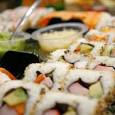
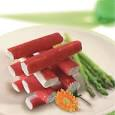
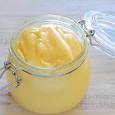
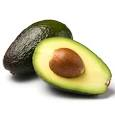
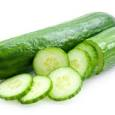
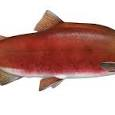
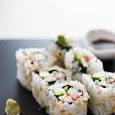
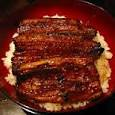
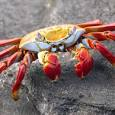
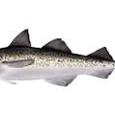


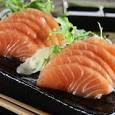
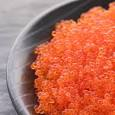











Add your comment